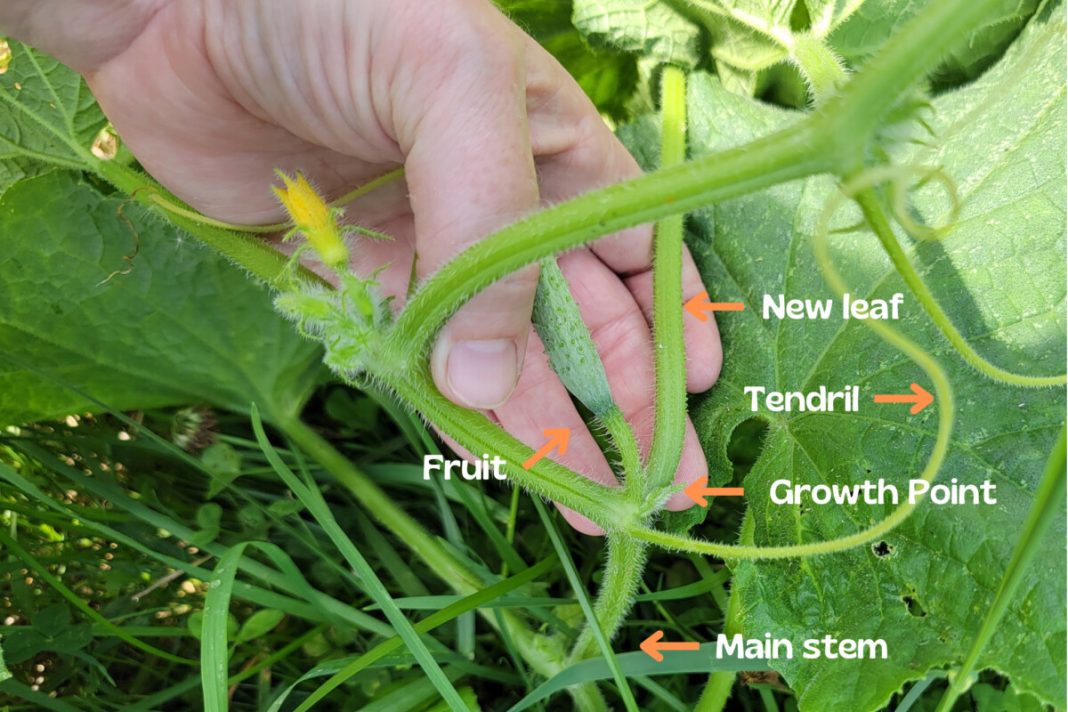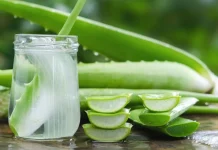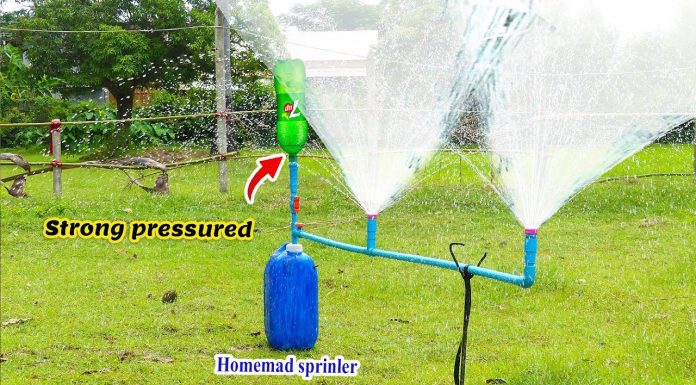Do you get overwhelmed by your cucumber plants? If you aren’t aware of how to properly prune the plants to keep them under control, they can easily take over your garden.
Even if you trellis your cucumbers, some still manage to take over an area. This is why it’s vital to understand the pruning process for these plants.
Pruning a cucumber plant isn’t difficult or time consuming. It only requires you to utilize a few tips and apply them to your gardening preferences and routines.
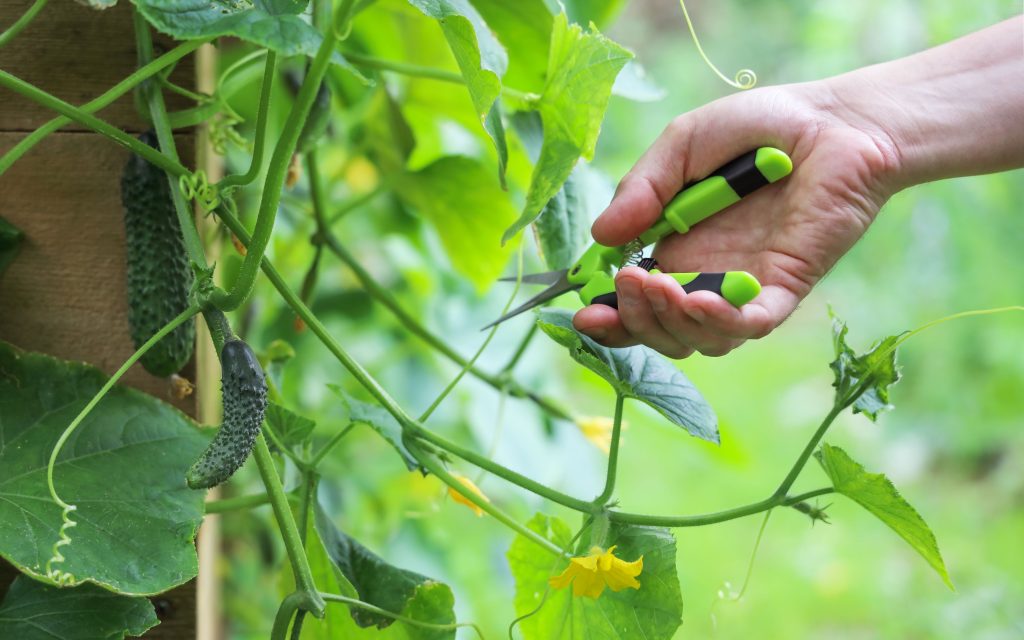
If you need a guide to pruning cucumber plants, you’re in the right place. Here’s what you should know:
WHY PRUNE A CUCUMBER PLANT?
There are multiple reasons to prune your cucumbers. The most obvious reason is it helps keep the plant under control and from taking over your garden.
Pruning can also help improve airflow around the plant. This reduces the likelihood of fungal issues developing.
It’s also wise to prune away any dead, damaged, or diseased portions of your cucumber plants. This will keep your garden cleaner and also avoid inviting more pests and diseases to feed on these damaged parts.
If you need a little motivation to prune your cucumber plants, hopefully these points will encourage you to add this task to your gardening to-do list.
STEPS TO PRUNING A CUCUMBER PLANT
We’ll now discuss a few pointers on how to prune your cucumber plants properly. It’s up to you which order you’d like to prune your plants.
Take these tips into consideration as you grow cucumbers and figure out what methods work best for you and your gardening style.
1. WORK WITH CLEAN EQUIPMENT
No matter where you start with pruning your cucumber plants, always make sure you work with clean, sharpened equipment.
Most people use pruning shears to care for their cucumber plants. No matter what your tool of choice, proper maintenance of the equipment matters.
Assuming you use pruning shears, it’s vital that they’re sharp enough to easily slice through the cucumber plant and avoid causing any damage.
If you damage your cucumber plant during pruning, this leaves wounds which may invite pests and diseases into the area.
Ensuring the shears are clean is also important as disease can easily spread from one plant to another when sharing equipment.
Once your shears are clean and sharp, you’re ready to begin the pruning process on your cucumber plants. Don’t forget to clean your shears when you’ve finished the pruning process, so they’ll be ready the next time.
2. LOCATE THE MAIN VINE
Before you dive into pruning your plant, study it. It’s important that you identify the main vine. During the bulk of the growing season, you’ll only prune vines which grow from this main area.
The main vine should only be clipped back at the end of the growing season if the plant has become overbearing.
Don’t do this during the main stretch of the growing season as this can dampen your harvest. Once your main vine has been located, begin examining the rest of the plant.
This will help you as you complete the remaining steps in the pruning process.
3. REMOVE LOWER LEAVES OF THE CUCUMBER PLANT AND LATERAL RUNNERS
As you further examine your cucumber plant, you’ll notice there are leaves near the ground. Go ahead and remove them.
Having leaves so close to the soil is a great way to trap moisture between the plant and the ground. This can lead to fungal disease.
Though fungal disease can usually be treated, it’s best to take steps to deter it when possible. By removing the leaves at the bottom of the plant, you’re increasing airflow which helps deter issues.
You should also remove the first five lateral runners on the plant. This should help increase its productivity.
After the first five are removed, allow the rest of the runners to form and follow the remaining tips on pruning your cucumber plants throughout the growing season.
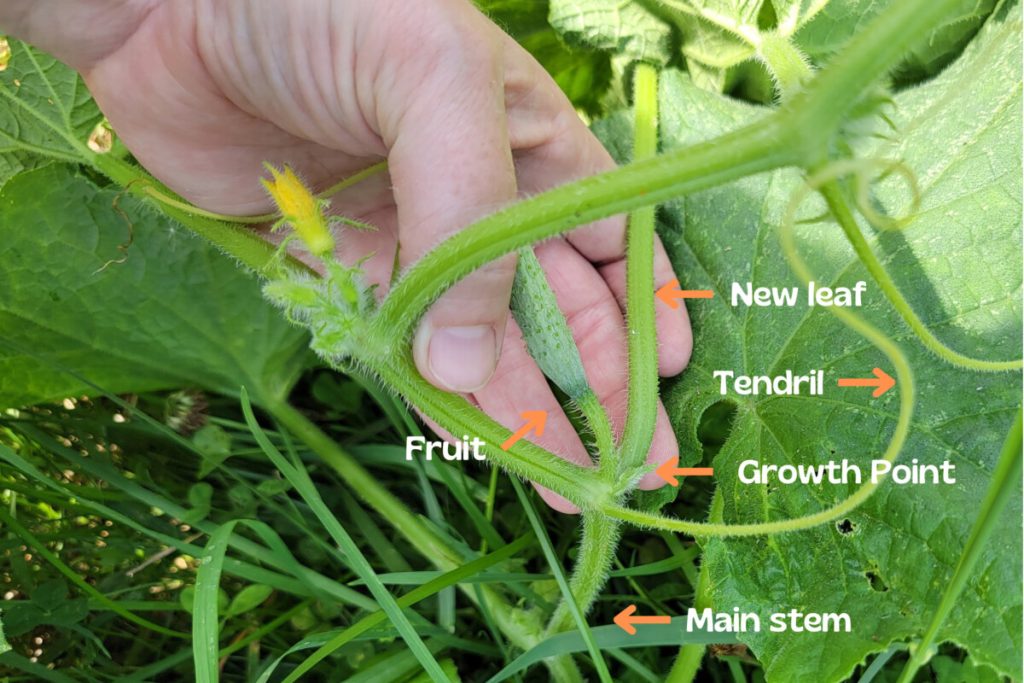
4. REMOVE SUCKERS ON THE CUCUMBER PLANT
When you’re picking your cucumbers, consider bringing your shears along with you. It’s a great time to examine your plants and prune as you pick.
However, be mindful to check your cucumbers before you begin pruning. As long as the plants are starting to set fruits on their main leaves, you should be in the clear to prune.
Another way to verify you’re safe to begin pruning is to look at the height of the plant. In approximately one month, each plant should be between one and two feet tall.
When they’ve reached these heights, it should be safe to begin pruning them.
Once you know it’s safe to prune, start with the suckers. Ensure you check the leaves to see if any suckers are forming. How can you spot a sucker on a cucumber plant?
You’ll notice you have the main vine, then an offshoot from the main vine with a large leaf attached, but then you may have a smaller offshoot with an undeveloped leaf.
This last offshoot with an undeveloped leaf is a sucker. These should be removed from the plant as they take nutrients from the more productive areas.
In turn, this can reduce the size of your harvest. Keep an eye out for suckers and remove them from your plant in a timely manner.
5. PRUNE OUTER LEAVES, FRUITS, AND FLOWERS
We’ve discussed how to spot the main vine of a cucumber plant and the only acceptable time to prune this vine.
However, it’s okay to prune any fruits, flowers, or outer leaves on the plant as needed. This will help keep the plant in check within your garden and shouldn’t hinder your harvest. It should also help improve airflow around the plant to deter issues with disease.
As suggested with suckers, when you’re harvesting your cucumber plants, go ahead and prune any part of the plant (aside from the main vine) that is becoming unruly or has been impacted by disease.
During this time, you’ll remove flowers. Be mindful of how you select the ones to be pruned. By removing some of the flowers, you’re encouraging an increase in both foliage and stem growth.
Therefore, if you think your cucumber plant needs to be fuller at the top, remove the flowers at the bottom and vice versa. This will signal the plant to send its nutrients to the remaining flowers.
Pruning a cucumber plant can involve some strategy. Look at your plant and see where it needs help for further growth or needs to be reigned in. Then remove the parts of the plant accordingly.
6. LEAVE THE TENDRILS ALONE
We’ve spoken a lot about the different parts of cucumber plants that should be pruned. However, there’s one main part of the plant you don’t want to remove if you can help it.
This part is the tendrils. Tendrils are the small curly parts of the cucumber plant that help it attach to a trellis and climb.
If you remove this portion of the plant, it’s stuck. This could impact the main vine in a negative way as it depends upon the tendrils for support.
Therefore, if you don’t have to remove tendrils from your cucumber plant, it’s best to leave them be and allow them to continue adding support. It will help keep your garden tidier in the long run.
7. DIFFERENCE BETWEEN PRUNING LARGER VARIETIES VS. SMALLER VARIETIES
Now that you have an understanding of which parts of the cucumber plant to prune and when, let’s discuss some variations to the pruning process.
How you prune your cucumbers will depend upon the variety and the size of the fruit the plant sets. The varieties which set smaller fruits, may not need to be pruned as heavily.
The reason being is that smaller fruit puts less stress on the plant. Therefore, it can support more small fruit than larger fruit.
Yet, if you’re growing a cucumber variety which produces larger fruit, you may need to pluck some of the fruit away from the plant to ensure you have a healthy harvest.
A general rule of thumb is plants which set smaller fruit, can have more than one fruit per leaf node.
However, if you have a plant with larger fruit, it can only set one fruit per leaf node. Take these tips into consideration when deciding how much fruit your cucumber plants should produce.
8. FREQUENCY OF PRUNING
There are many methods as to when you should prune your cucumber plants. I’ve suggested that you prune as you pick. This is an easy way to keep your cucumber plants in check while also ensuring you harvest cucumbers in a timely manner.
Another general guideline for pruning cucumbers is to ensure it’s done one to two times per week. In the thick of harvest time, you may pick cucumbers once per day.
It won’t be necessary to prune your plants as frequently as you pick during this time of the growing season, so having a goal for pruning each week can help you ensure you stay on top of your plants without over pruning them.
You’ll notice when your plants are in need of shaping up. The idea is to ensure that you inspect your plants, remove any outer leaves which take up too much room, and also remove suckers and excess fruit to encourage a bountiful harvest.
The final guideline people follow for pruning their cucumbers is to only start the process once you notice dead leaves.
By removing the dead leaves, you’re providing more sunlight to the new growth for stronger plants. From there, you can begin shaping up your cucumber plants per the instructions provided here.
How frequently you prune your cucumbers will depend upon the amount of time you have to spend in your garden. Pick the frequency which works best for your schedule and do what you can to help your cucumber plants be as productive as possible.
You now have a few tips on how you may prune your cucumber plants. Once you become familiar with the anatomy of a cucumber plant, it will become easier to spot the parts which need to be there and the parts of the plant that can hinder it if not removed.


